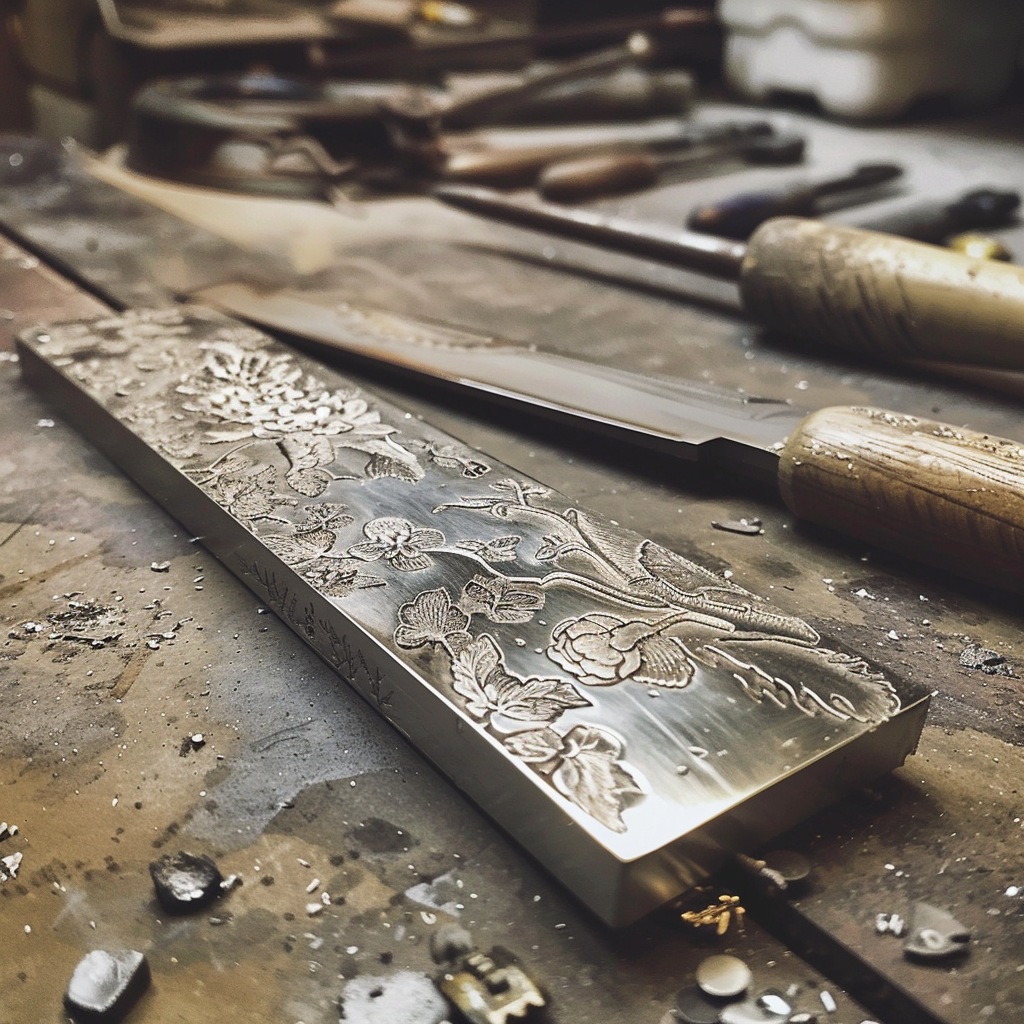Will Laser Engravings Wear Off?
If you’re thinking about Laser Engraving for your products
you may wonder if the engraving will endure or wear off. Essentially, the lifespan of laser engravings depends on different things like what material you're engraving, the type of engraving machine, and how deep the engraving is. Understanding these elements helps in estimating the longevity of your laser or digital engravings.
Unlike traditional printing methods, which may fade over time, laser engraving creates permanent, enduring designs, making it a popular choice for many different uses, from adding a personal touch to jewelry to labeling industrial components.
What is Laser Engraving?
Laser engraving is a precise technique used to etch designs, text, or patterns onto materials using a concentrated beam of light. This beam essentially carves the surface of the material like a chisel, leaving behind deep and enduring marks. The process begins with a design crafted on a computer, which is then transmitted to the laser engraving machine. This machine interprets the digital instructions and directs the laser beam to engrave the material accordingly.
The settings of the laser, such as intensity and speed, can be tailored to control the depth and intricacy of the engraving. This flexibility lets laser engraving work on various materials like metal, plastic, wood, and glass, making it easier to create intricate designs.
Durability of Laser Engravings
Laser markings do not fade, ensuring that the information on your product remains intact throughout its lifespan. Whether it's logos, serial numbers, instructions, or graphics, the marks made with laser engraving remain clear and permanent.
OakBane, a custom kukri machete engraved for a customer. This customer specifically uses this machete for clearing poison oak on local hiking trails
These engravings are well-known for their durability, often enduring as long as the materials they're engraved on. Several factors contribute to the long-lasting quality of digital laser engravings, making them a reliable option for many different purposes.
The material being engraved is one contributing factor. Laser engraving works on numerous materials, such as metal, plastic, wood, and glass. While each material reacts differently to the laser beam, metals and durable plastics typically yield highly durable engravings. For example, stainless steel can withstand harsh conditions without the engraving fading, which is why it's commonly utilized for industrial parts and medical tools.
Ensuring the quality of the laser engraving machine is vital for producing long-lasting engravings. High-quality machines equipped with advanced laser technology produce more precise engravings that penetrate deeper into the material. This precision guarantees that the marks aren't just surface-level but are deeply etched, which helps them last longer.
a custom laser engraved leather journal cover from our shop
The depth and technique of the digital engraving also play important roles. Deeper engravings tend to last longer than shallow ones because they are more securely embedded in the material. The technique used during engraving, such as the speed and intensity of the laser, determines the depth of penetration into the material. Experienced operators know how to adjust these settings just right to make sure the engraved art or text looks great and lasts a long time.
Examples of laser engravings holding up well include engraved jewelry that withstands daily wear while retaining its intricate design. In industrial settings, laser etchings are used for tasks such as marking serial numbers on machinery parts, demonstrating their ability to endure harsh conditions and heavy usage without fading. Laser-engraved plaques and awards also remain clear and legible for years, serving as lasting reminders of achievements.
our custom laser engraved aluminum business cards
Industries Benefiting from Laser Engraving Technology
Numerous industries derive substantial benefits from laser engraving technology, including:
Jewelry Industry: Laser or digital engraving enhances jewelry pieces with intricate designs and personalized touches without compromising their integrity.
Automotive Industry: Laser marking parts with serial numbers and logos aids in tracking them, ensuring their quality, and preventing counterfeit parts.
Medical Industry: Laser engraving surgical tools and medical devices facilitates tracking and inventory management.
Aerospace Industry: Using lasers to mark parts with special codes is important for keeping track of them and making sure they're safe.
Sporting Industry: In the sporting world, laser engraving isn't just for clothes—it's also used for equipment, offering long-lasting labels that endure heavy use.
Why Choose Laser Engraving Services?
Professional laser engraving services provide custom markings for whatever you need—whether it's jazzing up your favorite jewelry or adding a sleek logo to industrial gear. With fast and accurate machines, laser or digital engraving gets the job done right, cutting down on project times and any pesky mistakes. Plus, they’re versatile, working on a variety of materials like metals, plastics, wood, and glass, so your engraving looks fresh no matter what. It's all about durability and efficiency rolled into one seamless process.
Laser Engraving Services: Precision, Durability, and the Ideal Marking Solution
Looking to add a touch of personalization or durability to your items? Our professional laser engraving services have you covered. With precision and versatility, including specialized expertise in laser engraving metal and plastic, we can engrave on any material. Whether it's customizing jewelry, labeling industrial equipment, or anything in between, our laser engraving services ensure a lasting mark that stands the test of time. If you need something laser engraved, contact us today.





